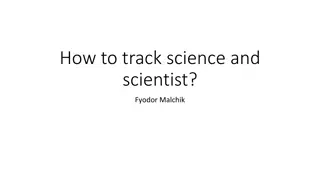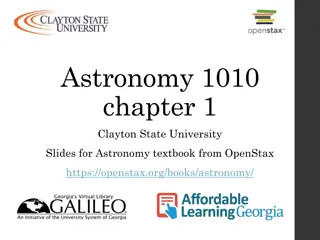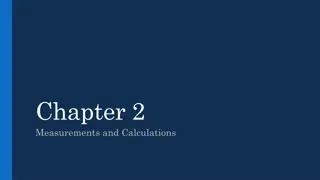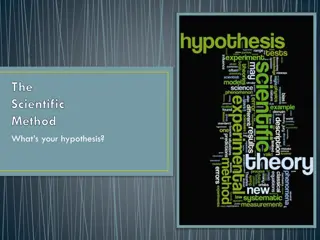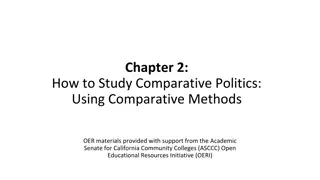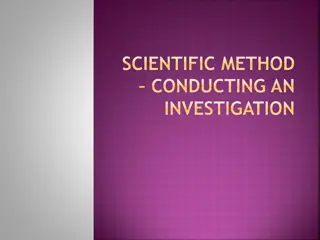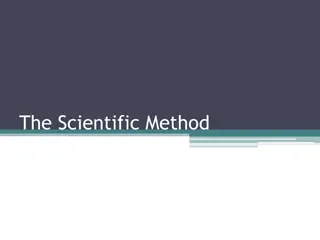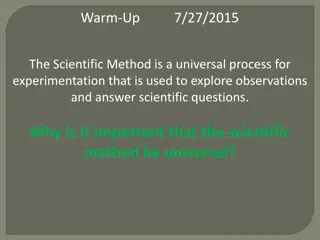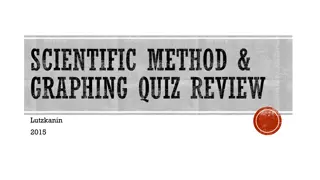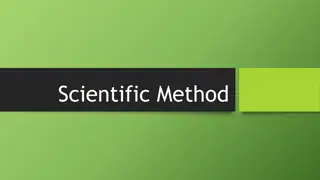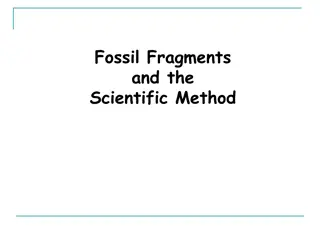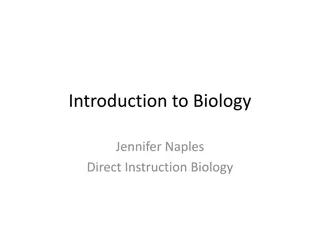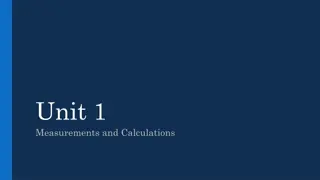Understanding the Scientific Method and Objective Approach
Explore the steps of the scientific method, importance of objectivity, and key concepts like hypothesis, null hypothesis, accuracy, precision, and sample size. Distinguish between inductive and deductive reasoning, as well as theory versus natural law in scientific research.
Download Presentation

Please find below an Image/Link to download the presentation.
The content on the website is provided AS IS for your information and personal use only. It may not be sold, licensed, or shared on other websites without obtaining consent from the author. Download presentation by click this link. If you encounter any issues during the download, it is possible that the publisher has removed the file from their server.
E N D
Presentation Transcript
SCIENTIFIC METHOD REVIEW Tuesday, August 4th, 2015 Textbook pages 15-19
STEPS TO THE SCIENTIFIC METHOD 1.Make an observation ask a question 2.Do background research 3.Construct a hypothesis 4.Experiment 5.Analyze Data 6.Conclude & Communicate Observe and Predict Form testable hypothesis/ prediction Collect data/conduct experiment to test prediction Interpret results Disseminate findings
WHY IS IT IMPORTANT TO BE OBJECTIVE AND METHODICAL? OBJECTIVE No personal bias / investment Must be reproducible by other scientists ** Not the same thing as consensus ** METHODICAL Other researchers can understand how the data was collected Other researchers can reproduce (replicate) the experiment
HYPOTHESIS Must be testable Idea, proposition (suggestion), possible mechanism, statement about effect
NULL HYPOTHESIS Sometimes it s easier to prove something wrong than right Statement/idea that can be proved wrong (falsified)
ACCURACY, PRECISION & UNCERTAINTY Accuracy (how close) Uncertainty: estimate of how much the measured/calculated value differs from the true value Precision (how repeatable)
SAMPLE SIZE & REPLICATION ARE IMPORTANT! Need to collect several sets of measurements Sample size = the number of times the measurement is repeated
INDUCTIVE VS. DEDUCTIVE REASONING Inductive: making statements from facts/examples Miss Scott is wearing a black dress today. Miss Scott only owns black dresses. Deductive: applying a statement to a fact/example Miss Scott only owns black dresses. Miss Scott is a wearing a dress today. The dress must be black.
THEORY VS. NATURAL LAW Theory: Repeatedly tested and has reached wide acceptance Natural Law: A theory with no known exceptions (has been significantly tested)
EXAMPLE PASSAGE 1 An experiment is set up to determine if wheat grows better when it is planted by itself or together with clover. The setup involves 3 pans of each treatment. Set-up A, B, and C contain wheat alone. Set-ups D, E, and F contain clover and wheat planted together; in rows alternating one seed of each type. One hundred seeds are planted in each pan. All treatments contain the same type of soil, are planted in the same size of pan, are exposed to the same amount of sunlight, and are maintained at the same temperature throughout the course of the experiment.
1. The treatments planted with wheat alone are the [A] Constant [B] Controls [C] Independent variable [D] Dependent variable [E] Replication 2. The following statement provides a hypothesis for this experiment: [A] Wheat grows taller when planted by itself than when it is alternated with clover. [B] Clover grows better when planted by itself. [C] Wheat grows better when planted together with clover. [D] Clover grows better when planted together with wheat. [E] Both A and C are legitimate hypotheses for this experiment.
3. Several setups of each treatment are prepared to fulfill a very important requirement of scientific experimentation, specifically the need for [A] Replication [B] Constants [C] A control [D] An independent variable [E] A dependent variable 4. Constants (controlled variables) in this experiment are [A] the pan of wheat, temperature, soil type [B] temperature, number of seeds in each pan, sunlight. [C] number of seeds in each pan, sunlight, one pan of wheat and clover. [D] The pans of wheat alternated with clover. [E] The same as the independent variable.



